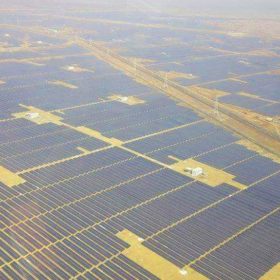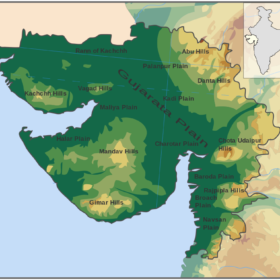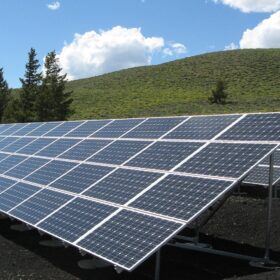NALCO, HCL and MECL sign JV agreement to secure lithium and cobalt
The joint venture company—Khanij Bidesh India Limited (KABIL)—will help India to secure strategic minerals from abroad for manufacturing of solar energy storage and EV batteries.
Energy storage installations to grow 122-fold by 2040; India among top 3
The global installed capacity will grow from a modest 9 GW/17 GWh as of 2018 to 1,095 GW/2,850 GWh in the next two decades. Just 10 countries will account for almost 75% of the overall gigawatt market, with China, USA, India and Germany leading the pack.
Azure Power wins 300 MW ISTS SECI solar project
The NYSE-listed solar developer now has 1.5 GW of interstate transmission system projects with sovereign counterparties—the largest such portfolio in India.
In SECI and NTPC PPAs, discom profile is integral for counterparty analysis: Ind-Ra
While Solar Energy Corporation of India and NTPC fare better on tariff payment obligations than directly selling to discoms, all other obligations need to be met by them only to the extent they are met on a back-to-back basis by discoms.
NSEFI asks ministry to intervene as Andhra Pradesh curtails renewable power
After High Court’s stay on tariff revision, the state government has resorted to unprecedented curtailment of wind and solar power projects.
India’s renewable power generation cost the lowest in Asia Pacific
The cost of solar power generation in India has fallen to half the level seen in many other markets in the region due to extensive solar resource, market scale and competition.
Tata Power to develop 250 MW project in Gujarat’s Dholera Solar Park
With this win, the company’s capacity under implementation would become 650 MW, which is in addition to the operating capacity of 2,476 MW (comprising 932 MW wind and 1544 MW solar capacity at utility scale).
Uttarakhand allots solar projects worth Rs 600 crore to local developers
The projects—to be set up in capacities of 100 KW and 5000 KW on the barren and uncultivatable lands—will generate an estimated 148.85 MW of solar power.
A window to the ‘inclusive’ green energy economy
India needs special institutional structures within leading public financial institutions to cater to market segments that do not attract commercial capital at competitive terms.
QMC bags fresh Amtronics order for solar cell production equipment
The $500k order follows the delivery of two high-volume quantum-dot production systems—valued at $1 million—to support roll-to-roll printing of thin-film solar cells at Assam facility.















